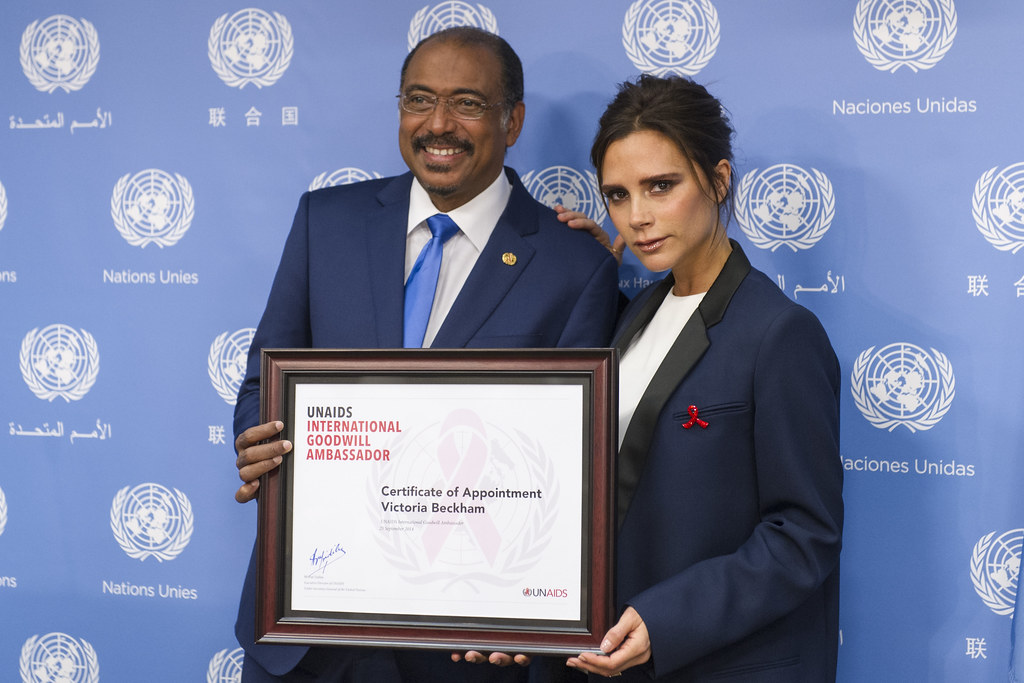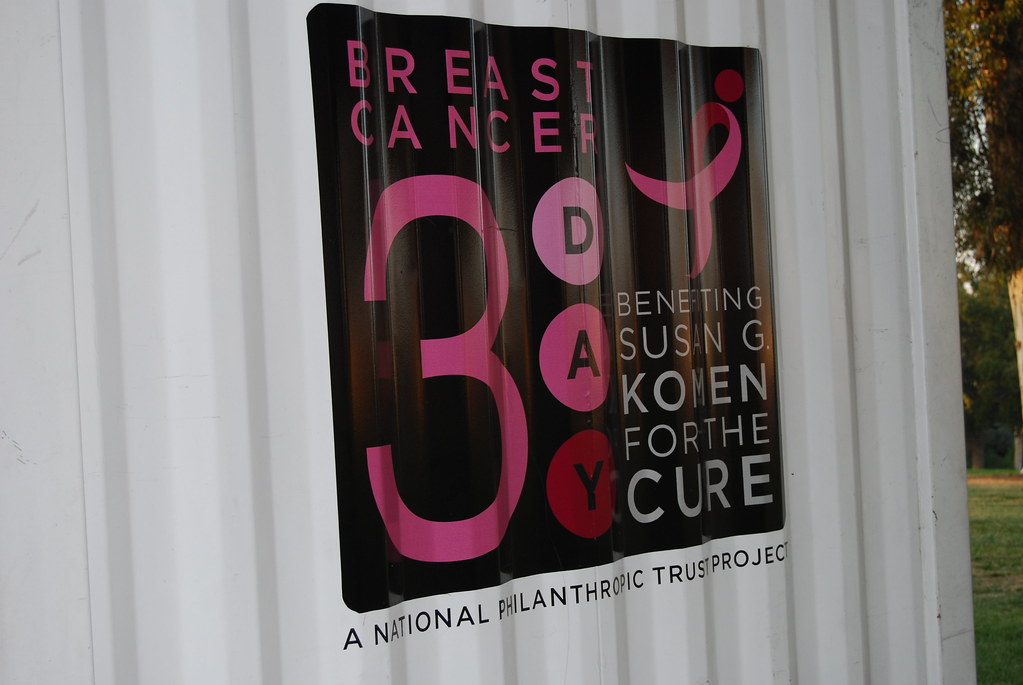
When individuals generously open their wallets to support a cause, they do so with an inherent trust. The simple act of giving to charity is often driven by a genuine desire to uplift others, to alleviate suffering, and to contribute to a better world, believing their hard-earned money will reach those truly in need. This foundational belief in the integrity of charitable organizations is what fuels philanthropy on a global scale.
However, a disturbing reality sometimes lurks beneath the surface of even the most reputable names. Behind the facade of altruism, some prominent charities have harbored dark secrets, engaging in practices that profoundly betrayed the trust of millions of compassionate donors. These revelations shake the very core of public confidence, forcing a re-evaluation of how we perceive and support philanthropic endeavors.
This in-depth article will pull back the curtain on 14 major charities that have found themselves embroiled in financial fraud, false advertising, and the blatant misuse of donations. These aren’t just isolated incidents; they are colorful stories of charity scoundrels, as described by CharityWatch, illustrating the critical need for robust oversight. Regardless of how distinguished or well-connected a charity leader may be, the temptation to abuse power and influence can lead them down a path that lands them in the “CharityWatch Hall of Shame.” Let’s delve into the first half of these impactful cases, understanding the mechanisms of their downfall and the lasting lessons for us all.

1. **Feed the Children**Feed the Children, an organization once famous for its television infomercials featuring malnourished children in impoverished areas, has a tumultuous history marked by significant financial disputes and mismanagement. Its founder, Larry Jones, ultimately faced termination by the board of directors following documented controversies. Public records from this period clearly show multiple lawsuits and investigations into the organization’s operational practices, including an FBI probe into allegations of financial misconduct, ultimately leading to a significant restructuring of the organization.
Under Larry Jones’ nearly three decades of leadership, Feed the Children earned the moniker “Most Outrageous Charity in America” from CharityWatch. This unflattering title reflected a consistent pattern of impropriety. For instance, a 1999 investigation by Nashville television station WTVF revealed that local executive staff regularly pilfered donated goods from the FTC warehouse for their personal use, a stark betrayal of donor intent.
Further demonstrating the charity’s internal struggles, The Daily Oklahoman reported in the same year that FTC allegedly tried to pressure the newspaper into suppressing a story about Jones’ son, Allen. Allen had filed for personal bankruptcy, revealing he owed his father’s charity a staggering $950,000. The newspaper’s editor recounted Jones offering a story “twice as good” if they dropped the controversial report.
The financial irregularities continued to mount. It came to light that FTC’s former chief financial director confessed to forging the signature of the accounting firm Arthur Andersen on the charity’s financial statements for 1997, 1998, and 1999. Adding to these alarming revelations, Jones was known for making major decisions without board approval, including awarding a $40 million annual, no-bid television buying agreement to Affiliated Media Group, a company that ironically employed his son, Allen.
The final straw for the board was Jones’ 2009 admission that he had authorized the wiretapping of FTC’s offices, secretly recording conversations with his employees. This act prompted the board to demand his sabbatical to end his “freewheeling dominance.” Jones resisted, attempting to install a loyal board, but was ultimately fired. This dismissal led to a wrongful termination suit from Jones, met by a countersuit from the charity alleging kickbacks from vendors, unauthorized raises for himself and his wife, misuse of funds, and even the discovery of a large stash of pornography within his private area at the Christian charity. By January 2011, a resolution was reached, severing Jones’ ties with the organization he founded. Encouragingly, by its 2017 fiscal year, Feed the Children began to improve upon its prior “F” and “D” ratings from CharityWatch, signaling a move towards recovery and better governance.
Read more about: The 11 Safest Car Seats of 2025: An In-Depth Guide for Parents on Crash Protection and Ease of Use

2. **Central Asia Institute**Greg Mortenson, the charismatic founder of the Central Asia Institute (CAI) and author of the New York Times bestselling books *Three Cups of Tea* and *Stones into Schools*, was once celebrated within philanthropic and literary circles. His reputation as a champion for education, particularly for girls in Afghanistan, captivated audiences and drew significant donations. However, this image began to unravel when CharityWatch initiated an investigation into his charity in 2009.
CharityWatch’s initial probes uncovered a severe lack of separation between CAI’s finances and Greg Mortenson’s personal business interests. Financial statements from 2009 starkly revealed that the charity was funding Mortenson’s book promotion and speaking events. Despite this significant outlay, CAI received no revenue from the sales of his bestselling books or associated advertising, and only a negligible amount from the substantial $25,000 to $30,000 per-event speaking fees Mortenson commanded.
These findings prompted *60 Minutes* to contact CharityWatch for deeper insights into CAI’s financial situation. Daniel Borochoff, president of CharityWatch, was interviewed for a *60 Minutes* story that brought to light issues far more extensive than simple financial mismanagement. The investigation surveyed approximately thirty schools that CAI publicly claimed to have built or supported. The findings were damning: roughly half of these schools were either empty, had been constructed by other organizations, or were not receiving any funding whatsoever from CAI.
Further compounding the controversy, author and former CAI donor Jon Krakauer, also interviewed by *60 Minutes*, alleged that many claims made in Mortenson’s inaugural book, *Three Cups of Tea*, were entirely fictitious. While Mortenson later conceded that events in his books were “compressed,” he steadfastly maintained that any literary license taken did not equate to outright lying. However, the damage to his credibility and the charity’s reputation was substantial.
The CAI board confirmed to *60 Minutes* that in 2009, only 41% of its expenses were actually directed towards building or supporting schools. They controversially argued that funds spent on speaking events, where Mortenson promoted his books, should also be counted as a charitable program expense. That year, CAI spent a considerable $1.7 million on book-related costs, encompassing “Advertising, events, film and professional fees, publications (books & freight), and some travel,” according to its audit. An attorney who examined CAI’s financial activities formally advised Mortenson and the charity’s board that “CAI’s outlays for book advertising and travel expenses for Mortenson’s speaking engagements appear to be in violation” of IRS rules, and warned that Mortenson could face liabilities of $7.2 million or more for “excessive benefits received during 2007, 2008, and 2009.” The charity’s 2010 tax form further solidified these concerns, revealing that it continued to spend more on “awareness,” primarily through Mortenson’s books, than on directly funding schools that year. CharityWatch subsequently called for Mortenson’s resignation, asserting that CAI’s tarnished reputation would be irreparable with him at the helm. The organization also came under inquiry by the Montana attorney general, which culminated in a settlement agreement requiring Greg Mortenson to pay over $1 million in restitution for financial wrongdoing at the charity he founded.
Read more about: Unpacking the Code: The 15 Most Controversial Hiring Practices Shaking Up Major Tech Companies Today

3. **Wounded Warrior Project (2016)**In 2016, the Wounded Warrior Project, a charity dedicated to aiding injured veterans, faced a severe crisis of public trust following an expose by CBS News. The investigation uncovered a “stunning misuse” of the generous donations intended for veterans. This revelation sent shockwaves through the philanthropic community and among patriotic donors.
The investigation detailed how the charity had reportedly spent a staggering $26 million on luxury conferences. This expenditure contrasted sharply with the allocation of funds directly to injured veterans, as only 60% of the donations were found to reach their intended beneficiaries. Such a significant discrepancy between public perception and actual spending ignited widespread public outrage.
The intense scrutiny and public outcry compelled the charity’s board of directors to take decisive action. In response to the scandal, top executives were promptly fired, and the organization committed to a complete overhaul of its spending policies. This internal restructuring was crucial for beginning the process of restoring the public’s faith.
Today, the Wounded Warrior Project has undergone significant reforms. The organization now proudly channels over 80% of its donations directly into veteran programs, a substantial improvement from its previous allocation. Furthermore, it maintains transparent quarterly reporting, a measure designed to ensure accountability and rebuild trust with its donor base and the veteran community it serves.
Read more about: The Ultimate Bat-Ranking: All 7 Live-Action Batman Actors, From Worst to Best
4. **Angel Food Ministries**Angel Food Ministries, initially conceived as a Christian food charity, promised to provide affordable meal boxes to poor families. However, this benevolent facade masked a darker reality: the organization was secretly operating as a personal family business, diverting charitable funds for extravagant personal gain. The founders, Joe Wingo, his wife Linda, and their son Andy, were at the heart of this extensive scheme.
The Wingos brazenly used donation money to finance a lavish lifestyle, acquiring luxury cars, vacation homes, and private planes, totaling an estimated $7 million. Their misuse of funds extended beyond personal indulgence, as they were also found to have coerced employees into campaigning for political candidates and threatening whistleblowers who dared to expose their illicit activities. The ministry’s operations came crashing down after a series of FBI raids exposed the massive financial crimes, ultimately leading the organization to declare bankruptcy.
Joe Wingo, who also served as a pastor at a church he founded, had a troubling past, having served a one-year prison sentence for extortion just a few years before establishing Angel Food Ministries in 1994. The organization, which aimed to sell affordable food by purchasing in bulk and distributing through volunteers and churches, even received partial funding from the USDA, including an almost $7 million low-interest loan issued in 2005, making the subsequent revelations even more egregious.
In September 2011, the Wingos abruptly shut down their charity. Two months later, a four-year federal investigation concluded with a 49-count federal indictment against the family. The indictment detailed a litany of illegal activities, including the use of charitable funds for extravagant personal purchases like cars, sporting goods, electronics, and even a down payment on a jet aircraft that the Wingos then leased back to the charity. They also issued millions of dollars in “bonus wages” to family members, who would then pay the money back to the charity in a convoluted scheme to conceal the Wingos’ debts to the organization.
The investigation also uncovered a complex system designed to force vendors to pay kickbacks as a condition of doing business with Angel Food Ministries. Furthermore, the Wingos used charity funds to support political campaigns and actively attempted to hide and destroy evidence sought by federal investigators. According to an August 2013 release from the Middle District of Georgia U.S. Attorney’s Office, Joe Wingo admitted to prosecutors that he used his position at AFM to make personal purchases with charity funds and then attempted to conceal these expenditures. Joe and Andy Wingo were each sentenced to seven years in federal prison after pleading guilty to conspiracy to commit money laundering. Joe was ordered to forfeit approximately $1.5 million and pay a $15,000 fine, while Andy forfeited about $2.4 million. Linda Wingo received a sentence of five years of probation and a $25,000 fine after pleading guilty to misprision of a felony, acknowledging her knowledge of a crime and concealing its commission. The story of Angel Food Ministries serves as a stark reminder of how deeply personal greed can corrupt charitable missions.
Read more about: Understanding the Shepherd’s Heart: An In-Depth Look at the Multifaceted Role of a Pastor in the Modern Era

5. **Shriners Hospital**Shriners Hospitals, renowned for providing free medical care to children, found itself under intense public scrutiny in 2009. An investigation brought to light alarming financial inefficiencies that threatened the very existence of some of its facilities, despite the organization’s substantial financial reserves. This situation raised serious questions about its stewardship of donor funds.
The investigation revealed that the hospital system was spending a staggering $1 million per day more than it was taking in from its endowment. This unsustainable spending pattern highlighted a critical imbalance in their financial management. Further examination of their financial records exposed that some Shriners Hospitals were allocating up to 65% of their budgets to fundraising and administration costs, rather than directly to the children’s medical care that was their core mission.
Despite possessing a significant $9 billion endowment, the organization announced plans to close six of its children’s hospitals due to these financial problems. This decision sparked widespread public outrage, particularly from families who relied entirely on the free, specialized medical care provided by Shriners. The prospect of losing access to these vital services underscored the profound impact of the financial mismanagement.
The controversy surrounding Shriners Hospital served as a critical lesson in transparency and accountability for well-established charities. It demonstrated that even organizations with deeply rooted histories and strong public support are not immune to the consequences of poor financial oversight and the subsequent erosion of donor trust when operational priorities drift from their stated mission.
Read more about: Michael Madsen, Iconic Tough Guy of Tarantino Films, Dies at 67: A Legacy of Grit and Unexpected Depth

6. **American Red Cross Haiti Relief**The American Red Cross, a venerable institution often at the forefront of disaster relief, faced significant questions regarding its handling of funds following the devastating Haiti earthquake. Investigations by ProPublica and NPR brought to light concerns about the transparency and effectiveness of how the immense donations designated for Haiti were being utilized, sparking public and congressional inquiry.
These investigations prompted congressional oversight, which in turn led to the implementation of detailed reporting requirements for the American Red Cross. This enhanced scrutiny aimed to ensure greater accountability and clarity in the allocation of relief funds. The organization was compelled to provide public accounting of how the funds were distributed, a necessary step to address the public’s concerns and rebuild confidence.
In response to the criticisms and new reporting mandates, the American Red Cross established new protocols for disaster relief fund management. These changes were designed to improve efficiency, transparency, and ensure that donations reached the intended beneficiaries more effectively in future crises. The Haiti relief scandal underscored the critical importance of rigorous oversight, even for long-standing and respected charitable organizations, especially when managing vast sums of public donations in high-stakes disaster recovery efforts.
Read more about: Beyond the Limelight: 15 Celebrities Who Are Seriously Changing the World with Their Generosity

7. **World Vision**World Vision, a global Christian humanitarian organization, found itself in the midst of a significant crisis in 2016. Its Gaza director was accused of a grave betrayal of trust: diverting a substantial $50 million in aid money to Hamas. This allegation immediately cast a dark shadow over the organization’s operations and its long-standing commitment to humanitarian principles.
The accusations detailed how World Vision’s Palestinian branch allegedly transferred food and other vital resources, intended for vulnerable civilians, directly to members of Hamas. This was reportedly achieved through a network of fake aid projects and the submission of inflated receipts, effectively weaponizing humanitarian aid for a militant group. The implications of such actions were severe, potentially violating international humanitarian laws and donor expectations.
When these allegations came to light, the repercussions were swift and severe. Several key donor countries, including Australia, immediately suspended their funding to World Vision’s Palestinian programs. This withdrawal of financial support dealt a profound blow to the organization’s operational capacity in the region and inflicted significant damage on its global reputation. The scandal raised critical questions about the security and oversight of humanitarian aid in conflict zones.
The World Vision scandal highlighted the immense challenges and risks faced by international aid organizations operating in complex political environments. It underscored the critical need for robust internal controls, rigorous financial monitoring, and vigilant oversight to prevent aid from being siphoned off or misused by nefarious actors, ensuring that charitable contributions truly serve those in greatest need and uphold the integrity of humanitarian efforts.
The stories of betrayal, unfortunately, don’t end there. As we peel back another layer of these unsettling narratives, we find that the pattern of trust eroded by greed and mismanagement continues to surface across various well-known charitable organizations. These instances underscore the persistent need for vigilance and accountability in the philanthropic sector, reminding us that even the most established names can fall prey to internal failures. Let’s explore a second set of critical cases that further illustrate the systemic challenges and deceptive practices that have deeply impacted public confidence in charitable giving.
Read more about: Understanding the Unraveling: 14 Critical Mistakes Behind the Collapse of Historical Empires

8. **Plan International**Plan International, an organization dedicated to advancing children’s rights and equality for girls, faced a serious blow to its reputation with a series of internal scandals between 2016 and 2017. A comprehensive internal investigation revealed widespread issues of abuse and fraud across several of its global operations, shaking donor confidence to its core. This was a stark reminder that even organizations with noble missions can have deep-seated problems.
The investigation uncovered alarming instances where staff members were actively involved in stealing funds. They achieved this through the creation of fake projects and the submission of inflated receipts, diverting money that was intended to help vulnerable communities. Even more disturbing were accusations that some employees demanded ual favors from beneficiaries, exploiting their positions of power in exchange for aid, a profound violation of trust and ethical standards.
Further compounding the crisis, the internal probe exposed a pattern of cover-ups by several senior managers. Instead of addressing the misconduct head-on, these leaders allegedly suppressed information, allowing the illicit activities to continue unchecked. The severity of these findings ultimately led to the dismissal of six country directors, marking a significant, albeit necessary, organizational upheaval.
In the wake of these revelations, Plan International committed to a complete overhaul of its child protection policies and internal control systems. This drastic action was a crucial step towards rectifying past failures and rebuilding the foundational trust with both their beneficiaries and the global donor community. The scandal served as a harsh lesson on the absolute necessity of rigorous internal oversight and a zero-tolerance policy for corruption and exploitation.
Read more about: The Ultimate Guide: Unpacking the U.S. Auto Repair Shops Facing the Most Customer Complaints

9. **Goodwill**Goodwill Industries, a household name renowned for its thrift stores and vocational training programs for disadvantaged individuals, found itself at the center of a controversial discussion regarding executive compensation and labor practices. The charity, whose mission is to provide job training and employment services, faced public and congressional scrutiny over how it managed its finances, particularly concerning the salaries of its top executives.
Public records brought to light the substantial salaries earned by several Goodwill CEOs, with figures reportedly ranging from $400,000 to $800,000 annually. This level of executive compensation sparked considerable debate, especially when juxtaposed with the wages paid to some of its disabled workers. Critics highlighted the stark disparity, arguing that while executives enjoyed lavish remuneration, some of the very individuals the charity aimed to help were paid significantly less, sometimes pennies per hour, under special wage certificates.
These revelations led to congressional scrutiny of Goodwill’s labor practices. Media investigations further amplified the concerns, exposing the significant pay gap within the organization and raising questions about whether the charity’s financial priorities aligned with its stated mission of empowering disadvantaged workers. The public discourse forced a closer examination of how charitable funds were being allocated.
The controversy prompted Goodwill to defend its executive pay as necessary to attract top talent required to run a multi-billion-dollar enterprise. However, the incident undeniably highlighted the ongoing tension between competitive executive salaries and the ethical implications of paying sub-minimum wages to vulnerable employees. It underscored the public’s expectation that charitable organizations should embody the principles of fairness and equity in all aspects of their operations.
Read more about: Behind the Blunders: 8 Celebrity Endorsement Disasters That Spiraled into Lawsuits and Left Brands Reeling

10. **ASPCA**The American Society for the Prevention of Cruelty to Animals (ASPCA), a prominent and widely recognized animal welfare organization, came under heavy criticism for its financial allocation practices. Despite its pervasive advertising campaigns depicting rescued animals, financial audits and investigations revealed a significant discrepancy between public perception and the actual deployment of donor funds. This raised serious questions about the charity’s effectiveness.
Financial audits indicated that the ASPCA was spending a considerable portion—over 35%—of its total donations on fundraising and advertisement costs. While advocacy and awareness are crucial, this high percentage drew scrutiny because it meant a smaller proportion of funds was directly reaching its core charitable programs. This allocation strategy led to public criticism that the organization was prioritizing self-promotion over direct animal care.
Further concerns arose from the finding that the ASPCA provided minimal direct financial support to local animal shelters, despite its advertising claims suggesting broader, hands-on involvement in animal rescue across the country. Many donors, believing their contributions were directly aiding local shelters and animals in immediate need, were misled by the charity’s national campaigns, leading to accusations of deceptive practices.
Internal documents brought to light systematic problems with the allocation of funds, confirming that the organization’s spending priorities often deviated from donor expectations. The criticisms compelled the ASPCA to address its operational transparency and demonstrate a clearer path for donations to directly impact animal welfare programs. This scandal highlighted the importance of clear communication and genuine impact for charities seeking public trust in the competitive landscape of animal welfare.
Read more about: Smart Protection for Your Furry Co-Pilot: 12 Essential Car Insurance Clauses Pet Owners Need

11. **St. Jude’s Research Hospital**St. Jude Children’s Research Hospital, widely celebrated for its groundbreaking work in treating catastrophic diseases in children and for its promise that families never receive a bill, faced scrutiny concerning executive compensation and aggressive fundraising tactics. While the charity maintains an extraordinary reputation for its medical mission, questions arose about its financial management and how it balanced operational costs with donor expectations.
Financial records indicated that executives at St. Jude received million-dollar salaries. This level of compensation, while common in large non-profit healthcare systems, became a point of contention for some, especially when contrasted with the narratives of struggling families often featured in their fundraising appeals. It raised questions about the ethical balance between competitive executive pay and the solemn purpose of a charity relying on public generosity for critically ill children.
Additionally, the organization faced criticism for what some perceived as excessive spending on fundraising and marketing campaigns. While St. Jude’s sophisticated marketing has been incredibly successful in generating donations, the sheer scale of these expenditures prompted concerns about efficiency and the optimal use of donor funds. The charity’s aggressive donation collection tactics were also a point of public discussion, with some finding them overly persistent.
Public pressure eventually led to policy discussions and changes within the organization regarding how it managed family medical bills and allocated resources. The focus shifted towards ensuring that the promise of “never receiving a bill” was unequivocally met, and that the lion’s share of contributions directly supported patient care and research, reinforcing the hospital’s commitment to its founding principles and its unwavering dedication to children’s health.

12. **Habitat For Humanity**Habitat for Humanity, a globally recognized nonprofit dedicated to building affordable homes in partnership with families in need, was rocked by a scandal involving its revered founder, Millard Fuller. The organization, built on principles of Christian faith and community service, faced a severe ethical crisis that led to Fuller’s dismissal from the very entity he established.
In 2004, multiple female employees came forward with accusations of ual harassment and inappropriate touching against Fuller, detailing incidents that reportedly spanned decades. These allegations, initially handled internally, eventually became public, forcing the organization to confront a deeply troubling pattern of behavior from its spiritual and operational leader. The board had reportedly attempted to keep earlier complaints from the 1990s quiet.
Despite denials from Fuller and even public support from figures like former President Jimmy Carter, the weight of the allegations and the public revelation of a long-standing issue proved too significant to ignore. Ultimately, Millard Fuller and his wife were removed from leadership, ending his 29-year tenure at the helm of Habitat for Humanity. This decision underscored the charity’s commitment to protecting its employees and upholding ethical conduct.
The scandal served as a profound turning point for Habitat for Humanity. It compelled the organization to implement new, stringent ual harassment policies and to significantly improve its human resources systems, ensuring a safer and more accountable workplace environment. The incident highlighted that even founders of the most respected charities are not above scrutiny and that organizational integrity must always supersede individual legacy.
Read more about: Echoes of Genius: Unpacking the Profound Legacies of 10 Iconic Scientists Who Redefined Our World

13. **Susan G. Komen Foundation**The Susan G. Komen Foundation, a leading breast cancer charity instantly recognizable by its pink ribbon campaign, experienced a significant decline in public trust and donations following a series of controversies centered on executive compensation, financial priorities, and political decisions. Once a fundraising juggernaut, the organization found itself under intense public and media scrutiny.
Tax records revealed that CEO Nancy Brinker received a substantial salary of $684,000, which drew considerable criticism, especially in the context of simultaneous program cuts within the organization. This raised questions about the charity’s allocation of funds and whether executive pay was disproportionate to the direct impact on its mission to fight breast cancer. Donors expected funds to go primarily to research and patient support, not high salaries.
Further eroding public confidence, the Komen Foundation spent an astonishing $1 million annually suing smaller charities over the use of trademarked phrases related to breast cancer. This aggressive legal stance was perceived by many as counterproductive and hostile towards other organizations working towards a common goal, creating a public relations nightmare and diverting valuable resources from core programs.
The charity’s marketing costs consumed 37% of its donations, while, troublingly, research grants simultaneously dropped by 30%. This shift in financial priorities, coupled with controversial political decisions regarding partnerships with healthcare providers, led to a significant backlash, costing the foundation an estimated 22% of its donations. The Komen Foundation’s experience highlighted the delicate balance charities must strike between brand protection, fundraising, and mission fulfillment, especially under intense public scrutiny.
Read more about: Aron Bell, Last Brother of a World War II Resistance Group, Dies at 98: A Legacy of Courage and Rescue

14. **SPCA International**SPCA International, another well-known name in animal welfare, faced severe accusations of financial mismanagement and misleading advertising. Investigations into its operations revealed a stark contrast between its public image and its actual expenditures, profoundly disappointing donors who believed their contributions were directly helping animals in dire situations.
The charity was found to be spending the vast majority of its donations—most of it—on direct mail fundraising campaigns rather than on tangible aid for animals. This allocation strategy meant that a disproportionately small amount of money was reaching its stated beneficiaries, creating a significant imbalance between awareness-raising and direct programmatic impact. Donors were funding appeals more than actual rescues.
Adding to the deception, SPCA International made false claims, including that it rescued military dogs and actively supported animal shelters worldwide. These compelling narratives were used to solicit donations, yet financial records showed that a minuscule 2% of the money raised was actually used to help animals in need. Such misleading advertising practices deeply betrayed the trust of compassionate donors.
Further allegations surfaced concerning the charity’s founder, who reportedly charged personal expenses to charity credit cards. This blatant misuse of funds, coupled with the systemic misallocation of donations, painted a picture of an organization prioritizing its own operations and personal gain over its supposed mission. The SPCA International scandal served as a stark reminder of the critical need for financial transparency and ethical leadership in the animal welfare sector.
Read more about: Fashion Face-Off: Celebrities Who Wore the Same Outfit with Different Flairs
These detailed accounts serve as a sobering reminder that the noble pursuit of philanthropy is not immune to human failings. The profound importance of robust oversight, stringent ethical guidelines, and transparent financial reporting cannot be overstated. Donors, whose generosity fuels these vital organizations, deserve the assurance that their contributions are indeed reaching those in greatest need, and not enriching a select few or funding dubious ventures. The lessons from these cases are clear: accountability is paramount, and unwavering integrity is the only sustainable path for any charity aiming to make a genuine, positive impact in the world. As we continue to navigate a complex charitable landscape, supporting organizations that embody true stewardship and genuine compassion remains an imperative.



